Coming off the back of two legendary expansions, Final Fantasy 14: Dawntrail has its work cut out for it. Thankfully, it’s a superb foundational expansion that evolves the world of the game in meaningful ways with a main scenario quest line chock full of excellent characters and phenomenal, culturally-rich worldbuilding. Even early on, content is some of the most engaging it’s been in years, with phenomenal dungeon, raid, and trial design.
Pros
- +
Excellent main scenario with wonderful characters
- +
New jobs are very welcome additions
- +
Engaging and challenging encounter design
- +
Breathtaking graphical improvements
- +
Another phenomenal soundtrack (thanks, Soken)
Cons
- –
Main story pace occasionally drops off
- –
Overall progression remains largely unchanged
Why you can trust TechRadar We spend hours testing every product or service we review, so you can be sure you’re buying the best. Find out more about how we test.
Review info
Platform reviewed: PC
Available on: PC, PS5, PS4, Xbox Series X|S
Release date: July 2, 2024
Final Fantasy 14: Dawntrail is the fifth major expansion for the increasingly popular massively multiplayer online role-playing game (MMORPG), and for many of us who are caught up in terms of story and content, it’s one that has some impossibly large shoes to fill.
In terms of story at least, Dawntrail is coming off the back of two unequivocally legendary expansions in Shadowbringers (2019) and Endwalker (2021). The former launched the game’s popularity into the stratosphere, while the latter wrapped up the decade-long Hydaelyn/Zodiark saga with terrifyingly high stakes and arguably one of the most satisfying conclusions in gaming history.
Dawntrail isn’t that, opting instead to kick off a brand new story arc in an entirely new region far to the west. And honestly, that’s perfectly okay. If you go in with the right expectations, Dawntrail still provides an incredibly fulfilling main scenario experience, rich with incredible worldbuilding, infectiously likable characters and a focus on a diverse range of cultures and their histories. While not quite as expertly paced as those two expansions that came before it, I once again felt beyond satisfied once the credits had rolled.
Where Dawntrail has other expansions beat, however, is in the quality of its encounter design and the noticeably higher challenge provided by even the non-high level content. While never back-breakingly hard (outside of Extreme trials and Savage raids, that is), you nonetheless have to dial in much more frequently. As a result, I’m extremely confident in the direction Creative Studio 3 has opted to take here, and I can’t wait for Dawntrail to be expanded in future patches.
Go west
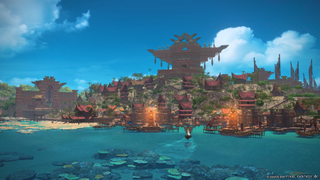
Dawntrail takes you, the Warrior of Light, to an entire continent you’ve yet to explore: Tural. Quite unlike large swathes of Eorzea – where everyone sounds like they’re from Wigan – Tural is a veritable cultural hotpot strongly inspired by various South American regions. The sprawling capital city of Tuliyollal is where your journey begins after a particularly perilous trip across the seas.
In Dawntrail, your goal is to aid Wuk Lamat, one of four claimants to Tuliyollal’s throne in its rite of succession. Objectives are twofold here; in order for Wuk Lamat to become Dawnservant, you must help her locate the legendary city of gold which her father – the current sitting ruler – discovered the gateway to decades ago.
Of course, this is far easier said than done. Opening the entrance to the golden city first requires you to find seven keystones entrusted to several cultural figureheads across Tural. By completing their tasks, you’ll earn those keystones.
Best bit
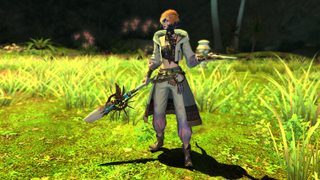
While nearly every aspect of Dawntrail forms a complete and satisfying whole, my favorite addition has to be the Pictomancer job. As a previous Red Mage and Summoner main, I feel Pictomancer is the most unique and most fun casting job Final Fantasy 14 has had to date. I’m strongly considering making it my main job for Savage raid progression.
But as mentioned, this is a four-way race, and those other three are equally as keen on becoming Dawnservant as Wuk Lamat is. First there’s Koana, Wuk’s adopted brother who spent much of his life studying to the east in Sharlayan. As a result, he’s incredibly sharp-minded, and wishes to utilize Sharlayan’s technologies to help Tural prosper.
Then there’s Zoraal Ja, the current ruler’s son and a man of very few words. Driven by pure ambition, Zoraal Ja makes for a terrifying presence during the rite of succession’s various trials. Lastly, there’s Bakool Ja Ja, something of a scoundrel who typically resorts to underhanded tactics to eke out every advantage he can.
There’s a rich tapestry of characters here, but Dawntrail makes it clear that Wuk Lamat is the expansion’s protagonist – and it’s one of the smartest things Creative Studio 3 has done here with Dawntrail’s plot. Initially, Wuk Lamat comes across as very naive and inexperienced despite her heart of gold.
While some may find this to be irksome, she’s also a distinctly human character; she’s afraid of heights, gets seasick and has a serious case of imposter syndrome. However, she grows exponentially over the course of the story. Wuk’s passion for her country and love of her people is what gives her an edge over the competition. And crucially, she learns to recognize when people cannot be reasoned with, and becomes unafraid to perform drastic actions should the need arise. I think she’s a wonderful addition to Final Fantasy 14’s cast and I hope she sticks around for the long run.
To go any further would spoil Dawntrail’s story, but despite the seemingly lower stakes, the narrative is filled with its own twists and turns that form an unpredictable and entertaining plot, despite the occasional stint where the story’s pacing tends to drop off a little.
This pace is the weakest aspect of Dawntrail’s main scenario. It’s by no means awful, mind, but it’s a little more uneven than Shadowbringers and Endwalker.
Let me paint a picture
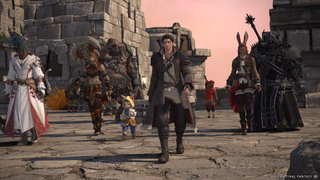
As with prior expansions, Dawntrail adds two new playable jobs (or classes for the uninitiated). This time we have two new damage-dealing jobs that add plenty of flair to the game. First is the melee DPS, Viper, which makes use of twin swords that can be combined into a single double-edged blade.
Viper can feel incredibly busy at first, with multiple combos, buffs and debuffs to maintain uptime on. It’s also a relatively fast-paced job, even by melee DPS standards, leading to a playstyle that’s both rapid and demanding. Thankfully, it is still fairly navigable; a yellow border around skills on your hotbar indicates which button you should be pressing next. This makes it very easy to keep track of fights while keeping your hotbars in your peripheral vision.
The second new job – and my favorite of the two – is Pictomancer. This is a casting DPS that utilizes aether-infused paint and motifs to deal damage and provide buffs to allies. Like Viper, Pictomancer initially seems more complex than it actually is, especially as its rotation is a bit more free-flowing than most other DPS roles. But after a little practice, you’ll be quite literally painting up a storm in no time.

As usual, a number of existing jobs have also received updates and – in some cases – major reworks. Monk, for example, feels excellent now thanks to a smart streamlining of its rotation. Instead of needing to upkeep a damage buff and a damage-over-time effect, one of your combos now generates orb stacks that effectively power up your more hard-hitting skills. On top of that, additional utility has been granted in the form of two extremely powerful ranged attacks.
Healer job Astrologian has also had a much-needed rework. Its card drawing system now has some additional depth, and there’s much more utility. Additionally, Astros now have two stacks of Lightspeed on a shorter cooldown, allowing them to instantly cast both damage and healing abilities more frequently.
The broader picture is that now, at Level 100, most of Final Fantasy 14’s jobs are beginning to feel somewhat complete. For example, jobs like Warrior and Reaper have seen very little changes outside of one or two new abilities or burst phase enders. The only real dud I’ve noticed is Summoner, which feels largely unchanged from its controversial Endwalker rework outside of the new form for Bahamut. Summoner, I feel, definitely could use more juice and I hope Creative Studio 3 considers looking over the job in future patches.
Locked in
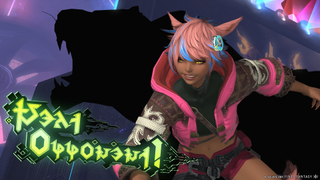
Dawntrail’s launch features all the party-based content we’ve come to expect from a new expansion: eight four-player dungeons (three of which are max level ‘Expert’ dungeons), three eight-player trials (essentially large-scale boss encounters, two of which have ‘Extreme’ difficulty variants) and the first of three eight-player raid tiers (which contains four boss fights with ‘Normal’ and ‘Savage’ variants).
Progression, then, isn’t anything we haven’t seen before. That may be frustrating to some players hoping for something a little different as we kick off a brand new story arc for Final Fantasy 14. However, I feel this setup does play to this expansion’s benefit, especially as the overall challenge has seen a noticeable uptick at the casual level. Around the time you reach the Level 95 dungeon, you’ll definitely feel like you have to lock in more as bosses begin throwing out more creative mechanics. It leads to a latter half that’s genuinely thrilling, without ever treading into unfair territory.
«The Arcadion is set up to be a quintessential tournament arc for our Warrior of Light…»
The Level 100 Expert dungeons, especially, surprised me with their difficulty compared to Endwalker’s. You have to learn and pay attention, and it wasn’t uncommon for parties to get caught up on a boss or two during progression. Should you fail, you can now respawn directly outside the boss room which is a huge timesaver and a smart way to eliminate the previous ‘walk of shame’ – which had players trudge through an entire empty section of dungeon just to get back to a boss.
This steeper difficulty also applies to Dawntrail’s eight-player raid series; The Arcadion. Set up to be a quintessential tournament arc for our Warrior of Light, this first tier features four fights with some wonderfully inventive mechanics. As an example, the first encounter’s boss begins to break the brittle platforms beneath them partway into the fight. Next, they target a player whom they’ll launch into the air after a few seconds. Said player will need to adjust their position so that, after being launched, they land on a tile that hasn’t been broken. Otherwise, they’ll plummet to their death. It’s a brilliantly thematic mechanic that really helps set the tone of the raid going forward.
The sights and sounds
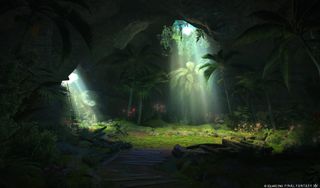
Lastly, I’d be remiss to not talk about the graphical overhaul that’s arrived as of Dawntrail’s release. The fundamental look of the game hasn’t changed much, but a much-needed upgrade to lighting, shadows and texture quality allow for a jaw-dropping facelift.
It’s partly why I’m glad that Dawntrail’s initial zones are relatively realistic in their design. The jungles of Kozama’uka, the rocky mounts of Urqopacha, and the swampy forests of Yak’tel all look breathtaking thanks to the overhaul. Certain weather conditions, like rain, are especially slick here, with light realistically bouncing off of wet surfaces.
It’s not just the new Dawntrail zones that have seen this upgrade, either. Checking out some older content, I was amazed by how much the overhaul has transformed some areas. While many locations have only received a light touch, dungeons like Syrcus Tower have received such an impressive upgrade that I almost didn’t recognize them at first.
Character models have seen a significant upgrade, too. Light interacts with skin more naturally than before. The au ra race’s horns are far more detailed, and touches like the way light shines through the softer parts of ears is wonderful attention to detail.
And of course, composer Masayoshi Soken has provided a near-immaculate soundtrack for the expansion; Dawntrail features some of his best work yet. New town and zone themes are some of my favorites to date, and later dungeon and trial themes are particularly hard-hitting, spanning orchestral, metal and drum-and-bass genres.
Accessibility
Final Fantasy 14 in general offers numerous accessibility settings through its options menus. Your heads-up-display (HUD) can be fully customized for size, opacity and even complexity. UI elements such as player, NPC and enemy names can also be color-coded to your liking as well.
Elsewhere, in the dedicated accessibility settings tab, there are options for clear visual alerts and three distinct colorblind filters (protanopia, deuteranopia and tritanopia).
Finally, Final Fantasy 14 has full controller support across consoles and PC, with a dedicated ‘cross hotbar’ system designed around the face buttons, d-pad and triggers. PlayStation controllers including the DualSense and DualShock 4 also have touchpad support, allowing you to control a mouse cursor with the controller. Finally, holding LB/L1 and pressing in the right stick brings up a virtual mouse which can be moved with the analog stick and left/right click is assigned to the triggers.
Should I play Final Fantasy 14: Dawntrail?
Play it if…
In this case, you’re already invested in the Final Fantasy 14 experience, and Dawntrail provides yet another high-quality expansion with an exceptional main scenario and deeply engaging content.
Without spoiling anything, Dawntrail’s second half is astonishing in its creativity, and the writers maintain the ability to present mature themes in some incredibly impactful ways.
